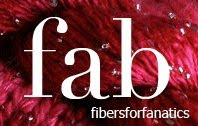Want to know more about Cashmere Yarn?
It is no small wonder
that cashmere and the yarn spun from it is one of the most precious and prized commodities in the
world. It comes from the downy underfleece of the cashmere goat which
makes its home in the highest and most inhospitable plateaux of Mongolia
and Xinjiang. Each year one goat produces a meagre 4.5 oz of under
fleece, which is painstakingly combed out every spring by nomadic
herdsmen. It takes the hair of one goat to make a scarf, two or three
for a jumper depending on the weight; 60% of each fleece is discarded.
However, it is what happens next that makes the difference between
run-of-the-mill and quality cashmere.
Ever since Victorian
England "discovered" the loft, warmth and feel of fabric made from
Cashmere, it has been in demand for those in high society. Just pick up a
novel or a fashion magazine, especially in the Fall, and you will see
references to cashmere sweaters, socks, suits and shawls... all costing a
lot of money. Historically, demand for these items has remained steady
through feast and famine, war and peace. This is because of the
wonderful feel or handle of the fiber combined with low bulk and high
loft. These factors combine to make the warmest, softest and most
comfortable garment money could buy.
Cashmere producing areas
remained in the Himalayan region throughout the first part of the 19th
century, extending east to China and west to Iran. But because of
political and geographical barriers, western clothiers never saw the
animals that produced the fiber; they bought cashmere in bulk, primarily
from India, China, Iran and Afghanistan.
Both
Australia and the American Southwest were settled by a tremendous
influx of immigrants from Europe. These peoples brought with them as
much as they could from the "old country" and this included the domestic
goat, known for its durability during long sea voyages, and as a
provider of milk and meat. Over the years in Australia, farms failed and
many goats escaped, resulting in flocks of wild, or feral, goats in the
vast interior "Outback". In America, especially in the Texas "outback",
huge tracts of arid lands were dedicated to running what is called a
"Spanish" goats because nothing else would thrive. In neither
environment were these goats tame. They ran wild most of the year and
were rounded up annually to harvest the young animals for the meat
market. It was the Australians who first noticed that natural selection
had produced a hardy, robust and wily animal, some of which had a
luxurious, downy undercoat as protection from the weather. In the late
1970's, the Aussies began selecting those fiber bearing animals and
selectively breeding them in an effort to establish a new industry.
Some Australian goats
were exported to the United States in the mid 1980's. Emphasis was
placed on fiber production, diameter and style, the natural "crimp"
along the length of an individual fiber. As the search for suitable
mates for these few imported animals progressed down to Texas, it was
discovered that our own Spanish goats had similar fiber already! These
animals were removed from their wild environment and bred to the Aussie
imports with visions of bales of fine cashmere dancing in our heads.
Very quickly we learned that cashmere is an elusive target. The very
does who exhibited fine fiber in the wild, suddenly turned into well fed
matrons that produced a similar fiber that was not cashmere and could genuinly, when spun be called cashmere yarn. This fiber
was at the time, called cashgora, although it is not truly a cross
between cashmere and mohair, produced by the Angora goat. Later research
proved that fiber diameter in goats is controlled both by genetics
(genotype) and environment (phenotype) and that goats raised under less
than optimum conditionscan exhibit finer fiber than they would
otherwise, as is the case in China, where even the people are underfed.
Goats exposed to a greater nutritional level as is necessitated when
removing them from the arid southwest and taking them to Colorado, New
Hampshire or Washington State, resulted in the production of this
coarser, straighter, but still luxurious fiber, now called commercial
cashmere.
True cashgora has a
third fiber type called kemp, and is very much avoided by both the
mohair industry and the cashmere industry. Especially in young animals,
it is very difficult to differential between cashmere and cashgora.
Unfortunately, this lead to the introduction of many "top quality
cashmere goats" that were not, resulting in many disenfranchised and
disappointed breeders.
The good news is that we
have realized the role that environment can play in fiber quality and
have redoubled our efforts to identify goats that are genetically
capable of producing cashmere. While we have not yet established a true
breed of cashmere goat, one that will pass along its desired genetic
package the majority of the time, we have made great progress and are
now producing American grown cashmere.



